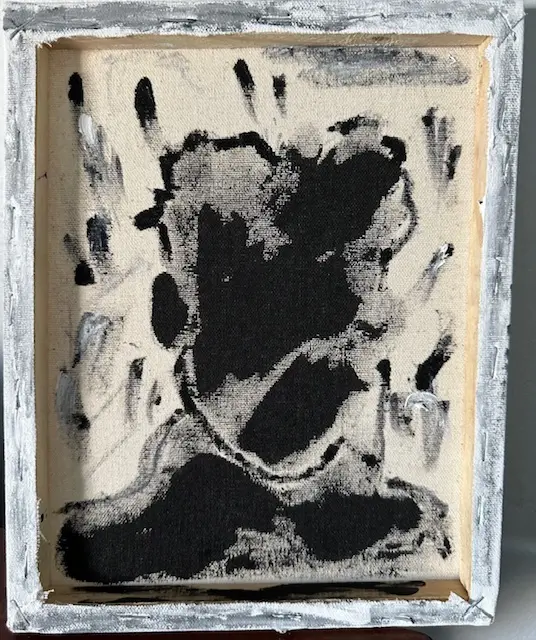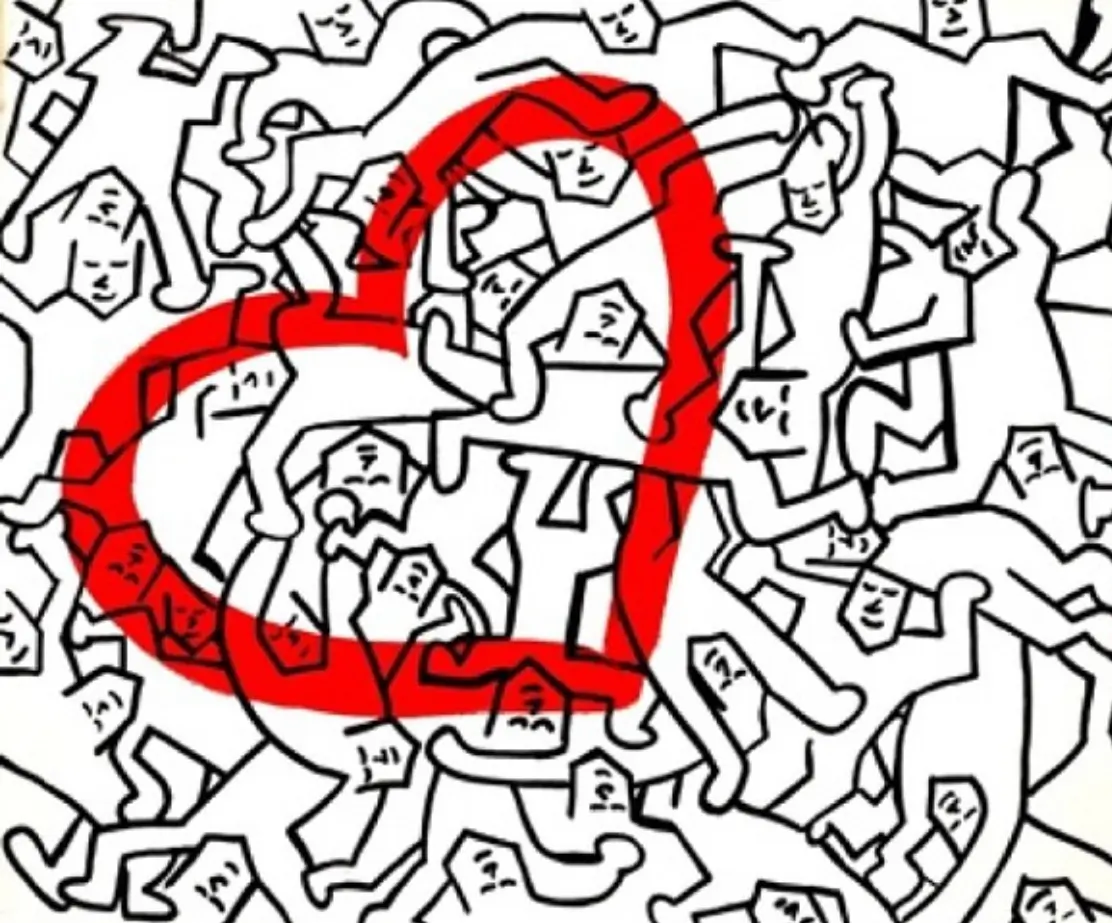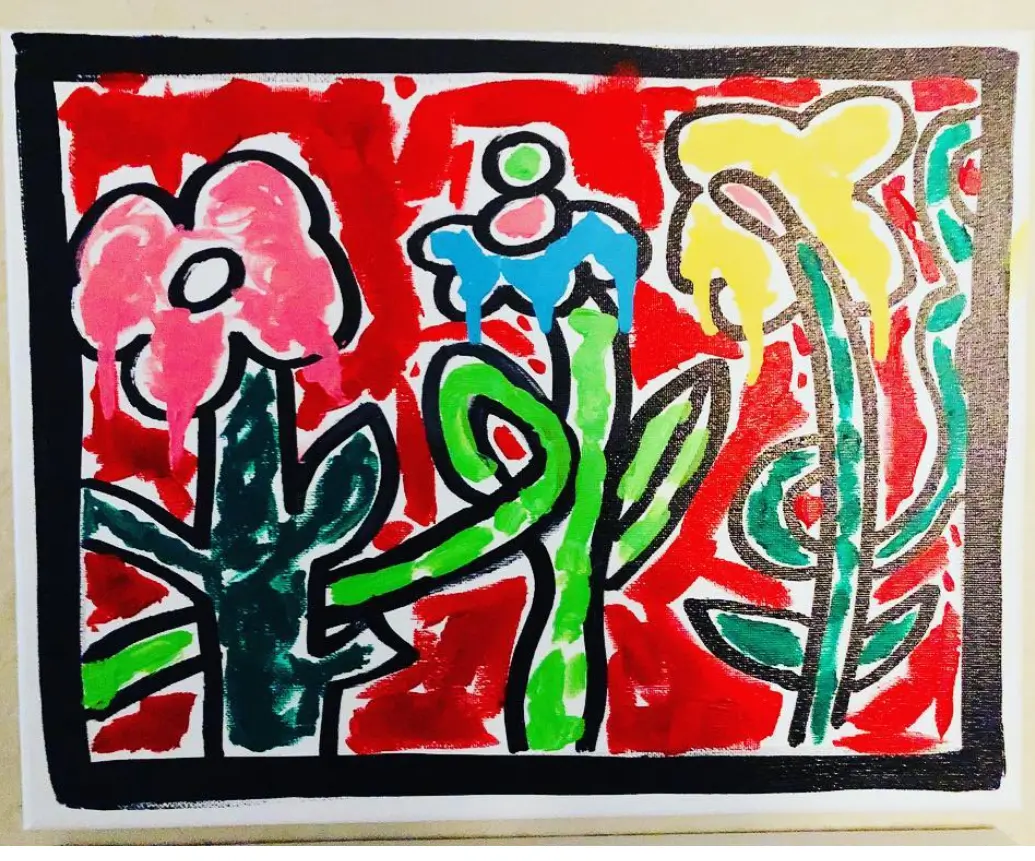Ready to learn about The Kiss by Gustav Klimt, one of the most iconic and beloved paintings in art history? Created during Klimt’s “Golden Period,” this masterpiece embodies the artist’s unique style and symbolism. Join us as we delve into the fascinating details and explore the enduring legacy of this renowned artwork.
Who Was Gustav Klimt?
- The Kiss by Gustav Klimt is known for its powerful presence and use of gold during his “Golden Period.”
- This painting represents the mystical union of spiritual and erotic love.
- Klimt’s bohemian lifestyle and association with Sigmund Freud influenced his artistic expression.
- Despite its scandalous reception, The Kiss became a symbol of the Vienna Secession art movement.
- The painting’s symbolism and blend of artistic influences continue to captivate audiences worldwide.
The Controversy Surrounding The Kiss
Despite its fully robed figures, The Kiss by Gustav Klimt was seen as scandalous and pornographic by the post-Victorian society of the early 1900s. The public outcry surrounding the painting did not deter its sale, as it was purchased by the Belvedere Museum in Vienna for a record-breaking price of 25,000 crowns, equivalent to $240,000 in contemporary U.S. currency.
The painting’s large size, measuring approximately 6 x 6 feet, adds to its grandeur and impact. It is considered the pinnacle of Klimt’s “Golden Period” and is often associated with sacrilegious interpretations due to its use of gold leaf.
“Despite the controversy, The Kiss is undeniably a masterpiece that challenges societal norms and pushes the boundaries of artistic expression.”
| Size | Price | Artist |
|---|---|---|
| 6 x 6 feet | 25,000 crowns | Gustav Klimt |
Gustav Klimt’s Artistic Style
Gustav Klimt is renowned for his distinctive artistic style, which is characterized by his masterful use of gold leaf and his incorporation of elements from various art genres. Influenced by the gold-detailed religious art of the Middle Ages and the captivating works of the Byzantine Empire, Klimt’s art exudes a sense of opulence and spirituality.
One of his most famous and iconic works, The Kiss, showcases Klimt’s artistic style and is considered a prime example of the Art Nouveau movement. This movement, prevalent in the late 19th and early 20th centuries, emphasized intricate patterns, stylized forms, and a blending of various artistic influences.
Through the use of gold leaf, Klimt adds a luminous quality to his paintings that creates a captivating visual impact. The gold accents heighten the sense of luxury and suggest a spiritual or divine quality within his works. This signature use of gold leaf is a distinguishing feature of Klimt’s art, setting him apart from other artists of his time.
In addition to his distinctive use of gold, Klimt’s art often embraces themes of love, intimacy, sensuality, and the exploration of both feminine and masculine energies. His paintings are characterized by intricate details and decorative patterns that draw the viewer into a world of beauty, passion, and emotion.
Gustav Klimt and the Art Nouveau Movement
Klimt’s embrace of the Art Nouveau movement gave his works a unique and modern aesthetic. The movement aimed to break away from traditional academic painting and incorporated influences from various art forms, including decorative arts, architecture, and graphic design.
With its emphasis on organic lines, floral motifs, and intricate patterns, Art Nouveau provided Klimt with a perfect platform to express his artistic vision. He combined these elements with his signature use of gold leaf to create paintings that exude a sense of beauty, mystery, and transcendence.
“Art is a line around your thoughts.”
– Gustav Klimt
Klimt’s unique artistic style, rooted in the Art Nouveau movement, continues to captivate audiences worldwide. His ability to merge different art genres, incorporate gold leaf, and explore themes of love and sensuality has solidified his place as one of the most influential artists of his time.
Now let’s take a closer look at the journey of The Kiss as an artwork and the lasting impact it has had on the art world.
The Journey of The Kiss as an Artwork
After its completion, The Kiss by Gustav Klimt was acquired by the Belvedere Museum in Vienna, Austria, for a record-breaking price of 25,000 crowns. This remarkable purchase took place during the height of the Vienna Secession movement, where Klimt played a significant role in its founding.
The Vienna Secession was a breakaway art movement that aimed to challenge traditional academic painting and embrace all genres of art. It sought to create a space where artists could freely express themselves and revolutionize the art scene. By acquiring The Kiss, the Belvedere Museum became a custodian of the movement’s ideals, celebrating the painting as a masterpiece of modern art.
The Journey of The Kiss
| Year | Event |
|---|---|
| 1908 | Purchase of The Kiss by Belvedere Museum |
| 1897 | Founding of the Vienna Secession movement |
| 1900 | Klimt’s significant role in the Vienna Secession movement |
Today, The Kiss remains a treasured possession of the Belvedere Museum, delighting visitors from around the world with its mesmerizing depiction of love and artistic brilliance.
The Symbolism and Influences in The Kiss
The Kiss by Gustav Klimt is a masterpiece filled with symbolism and influenced by Byzantine art and the Art Nouveau movement. Let’s delve into the intricate details that make this painting so captivating.
Symbolism
The Kiss is rich in symbolism, drawing inspiration from Byzantine art and its use of gold leaf. This technique echoes the opulence of Byzantine mosaics, especially those found in the Church of San Vitale, which greatly inspired Klimt. The application of gold leaf in The Kiss enhances the sense of divine love and spirituality.
The composition of the painting also reflects Klimt’s influences. The intertwined figures of the male and female lovers are reminiscent of Japanese prints, highlighting the influence of Japanese art on Klimt’s work. The contrast between the black and gray blocks on the man’s cloak and the floral motifs and flowing lines on the woman’s cloak signifies the blending of different art styles, representing the fusion of masculine and feminine energies.
Influences
Byzantine art played a significant role in inspiring Klimt. The intricate patterns and ornamental forms found in Byzantine mosaics influenced his artistic style and the use of decorative elements in his paintings. Klimt was particularly drawn to the spiritual and otherworldly aura that characterized Byzantine art.
The Art Nouveau movement also left its mark on The Kiss. Klimt embraced the fluid lines, organic forms, and stylized representations that defined this artistic movement. The incorporation of Art Nouveau elements, such as the floral motifs and the sinuous curves in the female figure’s dress, adds a touch of elegance and sensuality to the painting.
| Symbolism | Influences |
|---|---|
| Use of gold leaf | Inspired by Byzantine art |
| Contrasting patterns in cloaks | Blending of art styles |
| Japanese prints and Art Nouveau |
The Kiss by Gustav Klimt is a testament to the artist’s ability to infuse his work with profound symbolism and draw inspiration from various art movements. The use of gold leaf, the blending of contrasting patterns, and the incorporation of Art Nouveau elements all contribute to the allure and enduring appeal of this iconic painting.
Klimt’s Personal Life and Relationships
Gustav Klimt lived a bohemian and unconventional lifestyle, characterized by his numerous love affairs and his unwavering dedication to his art. Despite his many relationships, he never married and remained committed to his artistic pursuits. One of Klimt’s most significant loves and a possible muse for his iconic painting, The Kiss, was Emilie Flöge. Emilie, the sister of Klimt’s sister-in-law, shared a close bond with the artist and played a significant role in his personal life.
Klimt’s personal life and his artistic creations often intertwined, with his paintings reflecting his own desires and exploration of sensuality. His relationships with various women fueled his art, infusing it with an intimate and erotic energy. While Klimt’s love affairs were not officially recognized, he is rumored to have fathered multiple children, although he acknowledged only four of them.
“I am not interested in myself as a subject for painting, but in others, particularly women…” – Gustav Klimt
Throughout his career, Klimt drew inspiration from his personal relationships and the women who played significant roles in his life. His art became a medium for expressing his emotions and desires, capturing the essence of his experiences and the complexity of human relationships.
The Influence of Emilie Flöge
Emilie Flöge, an accomplished fashion designer and entrepreneur, influenced Klimt both personally and artistically. As a key figure in Vienna’s fashionable society, Emilie introduced Klimt to the bohemian lifestyle and provided him with a glimpse into a world of creativity and artistic liberation.
Their relationship, which lasted for many years, was marked by a deep emotional connection and a shared passion for the arts. Emilie’s innovative fashion sense and free-spirited nature had a profound impact on Klimt’s artistic vision, influencing his use of color, patterns, and unconventional artistic techniques.
| Emilie Flöge | Gustav Klimt |
|---|---|
| Accomplished fashion designer | Renowned artist |
| Influential figure in Vienna’s fashionable society | Leading figure in the Vienna Secession movement |
| Muse and inspiration for Klimt’s art | Devoted to creating artworks reflecting his emotions and desires |
The creative synergy between Klimt and Emilie Flöge is evident in Klimt’s works, particularly The Kiss, where Emilie is believed to have served as a model. Her independent spirit and artistic sensibility resonated with Klimt, fueling his passion for exploring themes of love, intimacy, and sensuality in his paintings.
Klimt’s personal relationships, including his connection with Emilie Flöge, shaped his artistic journey and contributed to his enduring legacy.
Klimt’s Artistic Influences and Techniques
While Gustav Klimt is best known for his renowned depictions of women, he also possessed a deep passion for painting landscapes. Drawing inspiration from the captivating landscapes of Lake Atter in Upper Austria, Klimt often used a telescope to observe and meticulously plan his compositions from a distance. This unique approach allowed him to capture the enchanting beauty and majesty of the natural world in his artwork.
Furthermore, Klimt’s involvement in the Vienna Secession movement played a crucial role in shaping his artistic techniques. As a founding member of this groundbreaking art movement, he was able to explore various innovative approaches and step away from the constraints of traditional academic painting. Klimt embraced bold experimentation, pushing artistic boundaries and creating powerful visual narratives that captivate viewers to this day.
One of the distinctive elements of Klimt’s work is his masterful use of gold leaf. His father, Ernst Klimt, was a gold engraver, and he imparted the techniques of working with gold to his son. Gustav Klimt utilized gold leaf in his paintings to add a luminous and opulent quality, infusing his works with an ethereal glow and depth. This technique not only elevated Klimt’s artistry but also became a signature aspect of his unique style.
This captivating image showcases the magnificent beauty of Klimt’s landscape paintings. The vivid colors and exquisite details transport viewers to a world filled with serene tranquility and awe-inspiring natural landscapes.
In summary, Gustav Klimt’s artistic influences and techniques were shaped by his deep appreciation for landscapes, his involvement in the Vienna Secession movement, and his mastery of using gold leaf. These factors combined to create a profound and timeless body of work that continues to inspire and captivate art enthusiasts around the world.
Klimt’s Impact on the Art World
Gustav Klimt’s contributions to the art world extended beyond his individual paintings. He played a pivotal role in the creation of two influential art movements, the Company of Artists and the Vienna Secession. These movements challenged traditional norms and pushed the boundaries of artistic expression, leaving a lasting impact on the art world.
The Vienna Secession, in particular, brought international attention to Vienna as an art center and promoted the integration of various art forms. Klimt’s involvement in this movement not only showcased his own artistic vision but also paved the way for other artists to explore new possibilities. The Vienna Secession emphasized the importance of artistic freedom, originality, and the fusion of different art forms.
“Art is not a mirror held up to reality but a hammer with which to shape it.”
– Gustav Klimt
Klimt’s influence as a renowned artist continues to shape the art world to this day. His bold and experimental approach encouraged artists to think outside the box and challenge the status quo. His use of bold patterns, intricate details, and the incorporation of gold leaf set him apart from his contemporaries, making a lasting impression on future generations of artists.
Klimt’s Impact on Contemporary Artistic Movements
Klimt’s art movements inspired and influenced subsequent generations of artists, from the Expressionists to the Symbolists. His unique blend of symbolism, sensuality, and intricate patterns set a new standard in the world of art. Artists like Egon Schiele and Oskar Kokoschka drew inspiration from Klimt’s exploration of the human form and the depths of human emotions.
Furthermore, the Vienna Secession movement paved the way for the development of Art Nouveau, an international art movement that embraced decorative and organic forms. Klimt’s use of gold leaf and his incorporation of different art forms set the stage for the Art Nouveau style to flourish and gain recognition globally.
The Influence of Klimt’s Legacy
Klimt’s impact and influence can be seen in contemporary art, fashion, and design. His distinctive style and unconventional subject matter have become synonymous with luxury and sophistication. The art world continues to celebrate Klimt’s unique vision and his ability to evoke intense emotions through his paintings.
The legacy of Gustav Klimt lives on through his contributions to the art world. As we admire his masterpieces, we are reminded of the power of artistic expression and the transformative role that artists can play in shaping society.
| Art Movements | Description |
|---|---|
| Company of Artists | An association of artists aimed at promoting modernism and challenging traditional art practices. |
| Vienna Secession | An art movement that sought to break away from academic art and embrace innovative and eclectic artistic styles. |
The Legacy of The Kiss
The Kiss by Gustav Klimt holds a significant place in art history as one of his most iconic masterpieces. With its grandeur, symbolism, and unique blend of styles, the painting has captivated audiences for over a century.
The cultural impact of The Kiss is undeniable, evident in its widespread recognition and reproduction on various merchandise. From prints to coffee mugs, the image of The Kiss has become synonymous with artistic beauty and emotional connection.
At its core, The Kiss represents love, passion, and the universal human desire for connection. The intimate embrace of the couple, enveloped in vibrant colors and intricate patterns, reflects the depth and intensity of their affection.
Throughout the years, The Kiss has continued to resonate with viewers, transcending time and cultural boundaries. Its enduring popularity showcases the timeless appeal of Gustav Klimt’s artistry and his ability to evoke emotions through his work.
As a masterpiece, The Kiss remains a testament to Klimt’s mastery of his craft and his innate understanding of human emotions. Its impact on the art world continues to inspire and influence artists and art enthusiasts alike.
The legacy of The Kiss lives on, serving as a testament to Gustav Klimt’s artistic genius and his contribution to the world of art. It stands as a reminder of the power of visual expression and the enduring beauty of masterpieces that leave an indelible mark on our cultural heritage.
The Kiss By Gustav Klimt
The Kiss by Gustav Klimt stands as an iconic masterpiece that continues to captivate audiences worldwide. This incredible work of art captures the essence of love and connection through its unique style, intricate patterns, and striking use of gold leaf. Klimt’s ability to blend different art genres and create a painting that transcends time and cultural boundaries is a testament to his artistic genius.
Despite facing controversy and being deemed scandalous in its time, The Kiss has gained widespread recognition and has solidified its place in art history. Its symbolism and universal themes have resonated with generations, making it one of the most celebrated artworks of all time.
Gustav Klimt’s contribution to the art world extends far beyond The Kiss. His influence can be seen in the Vienna Secession movement and his role in challenging traditional norms. His legacy as a renowned artist continues to shape the art world today, with his ability to evoke emotions and create enduring works that captivate audiences.
The Kiss by Gustav Klimt remains an iconic masterpiece that showcases the power of art to evoke emotions and transcend time. Its cultural impact and enduring popularity serve as a testament to Klimt’s unparalleled talent and his ability to create art that speaks to the hearts of people worldwide.
About Gustav Klimt
What is the size of The Kiss painting by Gustav Klimt?
The painting measures 72in x 72in (180cm x 180cm).
Where is The Kiss painting displayed?
The Kiss is displayed in Vienna’s Austrian Gallery.
Why was The Kiss considered scandalous and pornographic?
Despite its fully robed figures, The Kiss was seen as scandalous and pornographic by the post-Victorian society of the early 1900s.
How much did The Kiss painting sell for?
The Kiss was purchased by the Belvedere Museum in Vienna for a record-breaking price of 25,000 crowns, equivalent to $240,000 in contemporary U.S. currency.
What art movement is The Kiss associated with?
The Kiss is considered a prime example of the Art Nouveau movement.
What were Gustav Klimt’s influences for The Kiss?
The Kiss was influenced by Byzantine art, Japanese prints, and the Arts and Crafts movement.
Did Gustav Klimt ever marry?
No, Gustav Klimt never married.
What other genres did Gustav Klimt paint?
In addition to his depictions of women, Gustav Klimt also had a passion for painting landscapes.
What art movements did Gustav Klimt contribute to?
Gustav Klimt played a pivotal role in the creation of the Company of Artists and the Vienna Secession movement.
What is the cultural impact of The Kiss?
The Kiss holds a significant place in art history as one of Gustav Klimt’s most iconic masterpieces with enduring recognition and widespread reproduction on various merchandise.
What is the legacy of The Kiss?
The Kiss represents love, passion, and the universal human desire for connection, showcasing the timeless appeal of Gustav Klimt’s artistry.







